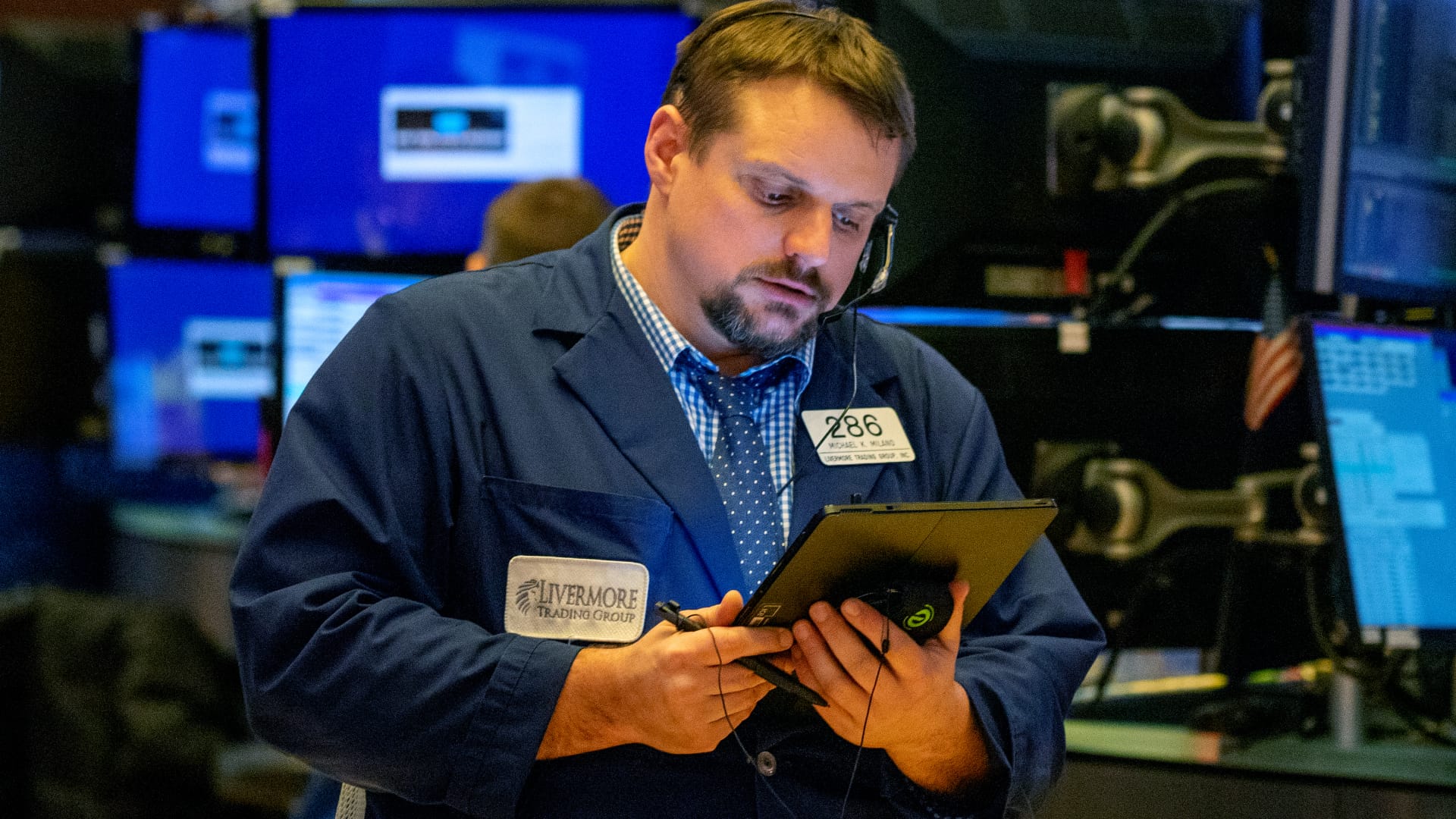
A Trader on the floor of the NYSE
David Dee Delgado | Getty Images
The bond market is flashing a warning sign for the U.S. economy.
That harbinger is called an “inverted yield curve.” These inversions in the bond market have been reliable predictors of past recessions. Part of the yield curve inverted on Monday.
An economic downturn isn’t assured, though. Some economists think the warning is a false alarm.
Here’s what to know.
What’s an inverted yield curve?
Why is it a warning sign?
An inversion in the yield curve doesn’t trigger a recession. Instead, it suggests bond investors are worried about the economy’s long-term prospects, Roth said.
Investors pay most attention to the spread between the two-year U.S. Treasury and the 10-year U.S. Treasury. That curve isn’t yet flashing a warning sign.
However, the five-year and 30-year U.S. Treasury yields inverted on Monday, the first time since 2006, before the Great Recession.
“It doesn’t mean a recession is coming,” Roth said of the inversions. “It just reflects concerns about the future economy.”
The two- and 10-year Treasury yield curves inverted before the last seven recessions since 1970, according to Roth.
However, data suggest a recession is unlikely to be imminent if one materializes. It took 17 months after the bond-market inversion for a downturn to start, on average. (Roth’s analysis treats the double-dip recession in the 1980s as one downturn.)
There was one false alarm, in 1998, she said. There was also an inversion right before the Covid-19 pandemic, but Roth said it can arguably also be considered a false alarm, since bond investors couldn’t have predicted that health crisis.
“It doesn’t work all of the time, but it has a high success rate for portending a future recession,” said Brian Luke, head of fixed income for the Americas at S&P Dow Jones Indices.
Interest rates and bonds
The Federal Reserve, the U.S. central bank, has a large bearing on bond yields.
Fed policy (namely, its benchmark interest rate) generally has a bigger direct impact on short-term bond yields relative to those of longer-term bonds, Luke said.
Long-term bonds don’t necessarily move in tandem with the Fed benchmark (called the federal funds rate). Instead, investors’ expectations of future Fed policy have more bearing on long-term bonds, Luke said.
The U.S. central bank raised its benchmark rate in March to cool down the economy and rein in inflation, which is at a 40-year high. It’s expected to do so many more times this year.
There’s nothing magical about a yield-curve inversion. It’s not a light switch that’s flipped.
Preston Caldwell
head of U.S. economics at Morningstar
That has helped push up yields on short-term bonds. Yields on long-term bonds have risen, too, but not by as big a margin.
The yield on the 10-year Treasury was about 0.13% higher than that of 2-year bonds as of Monday. The spread was much larger (0.8%) at the beginning of 2022.
Investors seem concerned about a so-called “hard landing,” according to market experts. This would happen if the Fed raises interest rates too aggressively to tame inflation and accidentally triggers a recession.
During downturns, the Fed cuts its benchmark interest rate to spur economic growth. (Cutting rates reduces borrowing costs for individuals and companies, while raising them has the opposite effect.)
So, an inverted yield curve suggests investors see a recession in the future and are therefore pricing in the expectation of a Fed rate cut in the longer term.
“It’s the bond market trying to understand the future path of interest rates,” said Preston Caldwell, head of U.S. economics at Morningstar.
Treasury bonds are considered a safe asset since the U.S. is unlikely to default on its debt. Investor flight to safety (and hence higher demand) for long-term bonds also serves to suppress their yield, Luke said.
Is recession likely?
A recession isn’t a foregone conclusion.
It’s possible the Federal Reserve will calibrate its interest-rate policy appropriately and achieve its goal of a “soft landing,” whereby it reduces inflation and doesn’t cause an economic contraction. The war in Ukraine has complicated the picture, fueling a surge in prices for commodities like oil and food.
“There’s nothing magical about a yield-curve inversion,” said Caldwell, adding that it doesn’t mean the economy is going to shrink. “It’s not a light switch that’s flipped.”
Many economists have adjusted their economic forecasts, though. J.P. Morgan puts the odds of recession at roughly 30% to 35%, which is elevated from the historical average of about 15%, Roth said.




